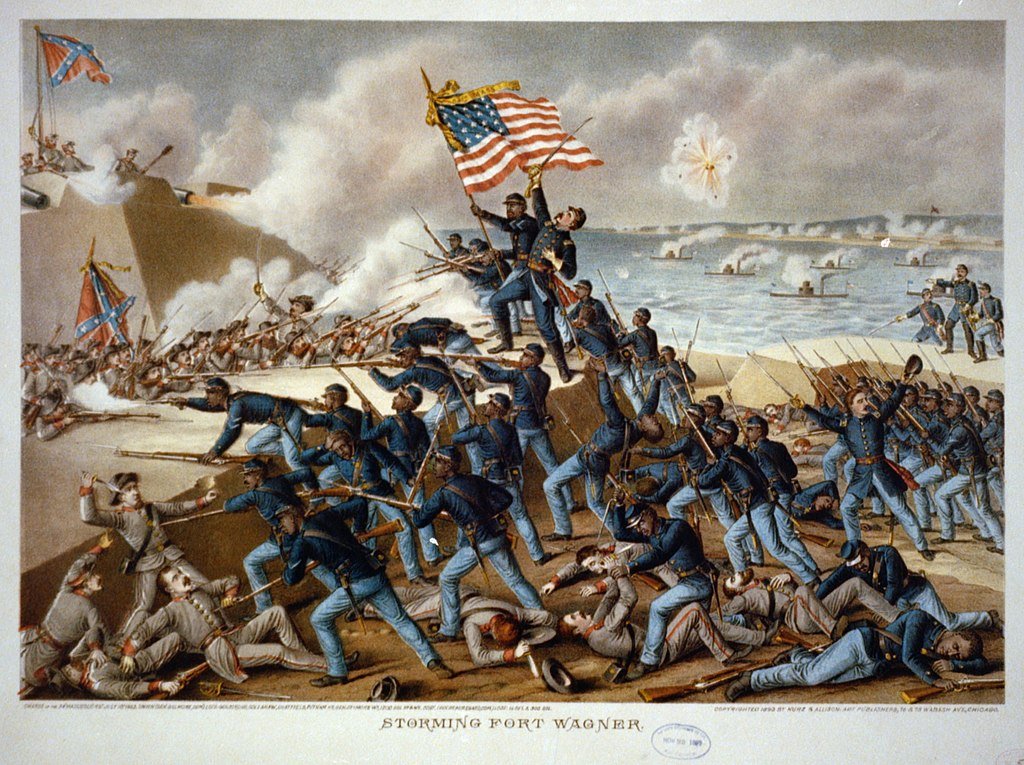George E. Stephens was a Civil War hero from Philadelphia. He was outraged at not initially being able to fight as he was an African America, so took other roles until free African Americans could join the war.
The 54th Massachusetts Infantry Regimentat the Second Battle of Fort Wagner in July 1863. By Kurz & Allison.
When It came to the cause of freedom, George E. Stephens was the first to step up.
It’s been 160 years since the last of George E. Stephens correspondence letters were sent to the New York Weekly Anglo-African, and 35 years since the Civil War movie Glory hit movie theaters around the country. The film depicts the formation of the 54th Massachusetts who bravery led the attack on the Confederate defenses at Fort Wagner in Charleston Harbor in July of 1863.
He is even loosely based on a character in the 1989 film.
Stephens was born in Philadelphia in 1832, the son of William Stephens, worked who would eventually become a lay preacher in the First African Baptist Church, which became extremely active in the abolitionist movement and ultimately in the Underground Railroad.
Although we don’t know much about Stephens’ education, it is probable that he received an education through the Quakers and possibly the Pennsylvania Abolition Society.
Honoring African American Mathematician Benjamin Banneker, he joined a group of fifteen to form The Banneker Institute (a literary society.) Ironically, he was nearly enslaved between 1857–1858 around where the 54th Massachusetts would make their galant charge on Fort Wagner in 1863.
During the Civil War, he initially signed on as a cook and began sending war correspondences to the New York Weekly Anglo-African.
Stephens was a driving force in enlisting men to join the 54th in Philadelphia and would himself signup with the regiment in April 1863 as a Sergeant.
During the brave attack on Fort Wagner on July 18, 1863 the 54th Massachusetts emerged after 7:30 P.M. and advanced up the sandy beach. By the time that the regiment’s charge arrived at the parapet of Wagner, they had withstood immense casualties. Among the 272 men killed from the regiment was commander Colonel Shaw, whose sword was taken from his body after the battle.
Fellow Sergeant William H. Carney, upon seeing that the United States flag was faltering and about to drift into the sand, grabbed it and moved forward despite being wounded. After being pulled to safety, he refused to let go of the colours saying that he had not let them touch the ground.
Stephens was at the center of the 54th’s advance on Fort Wagner. He was wounded but managed to survive and escape without being captured.
After the Civil War, he spent time as a cabinet maker and upholsterer and also as a sailor and also educated newly freed slaves.
Stephens died in Brooklyn, New York in April 1888.
In 1997, editor Donald Yacovone released “A Voice of Thunder: The Civil War Letters of George E. Stephens.”
Did you find that piece interesting? If so, join us for free by clicking here.
Michael Thomas Leibrandt lives and works in Abington Township, Pennsylvania.








